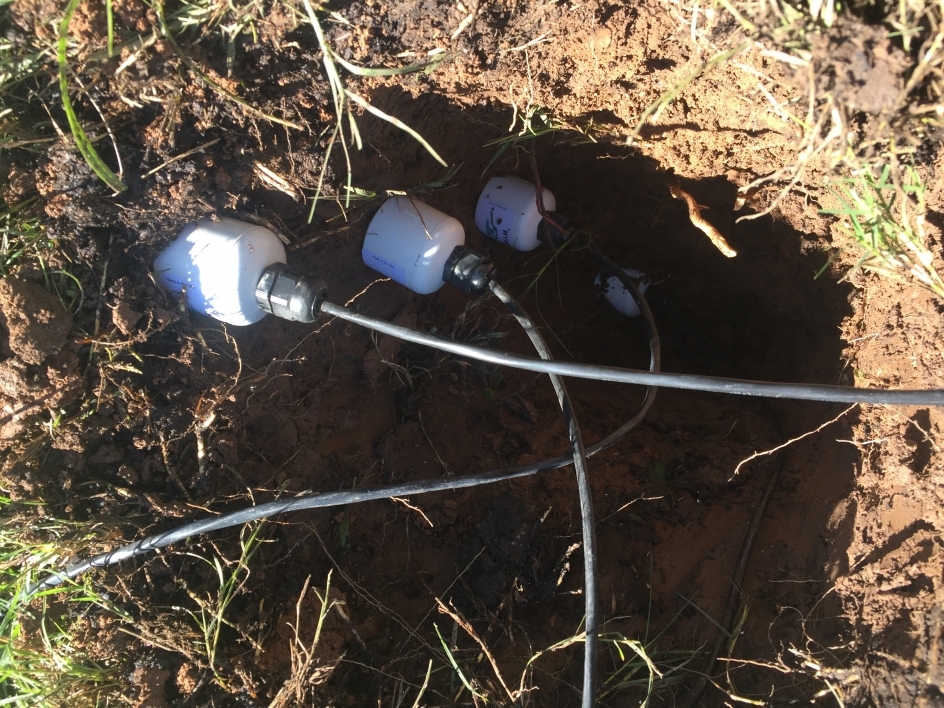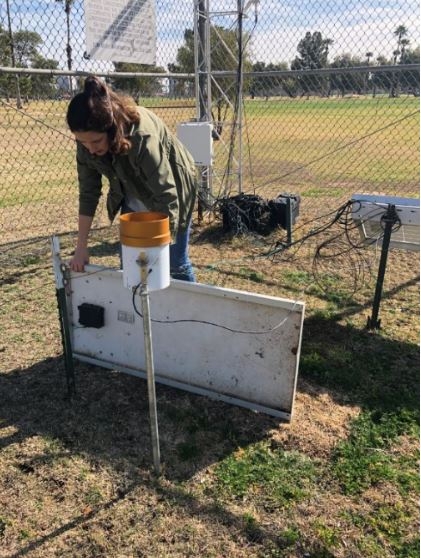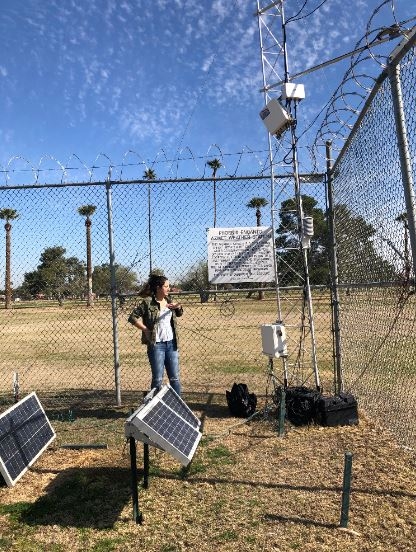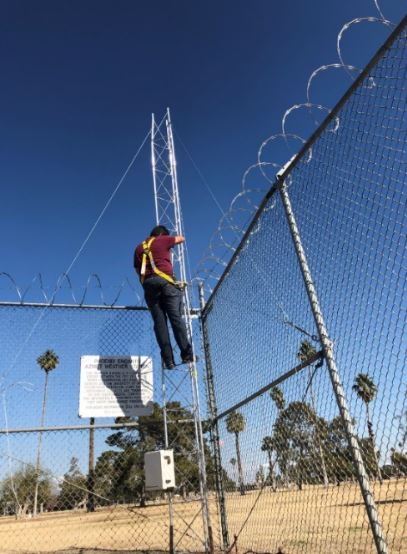'Oasis effect' in urban parks could contribute to greenhouse gas emissions, ASU study finds
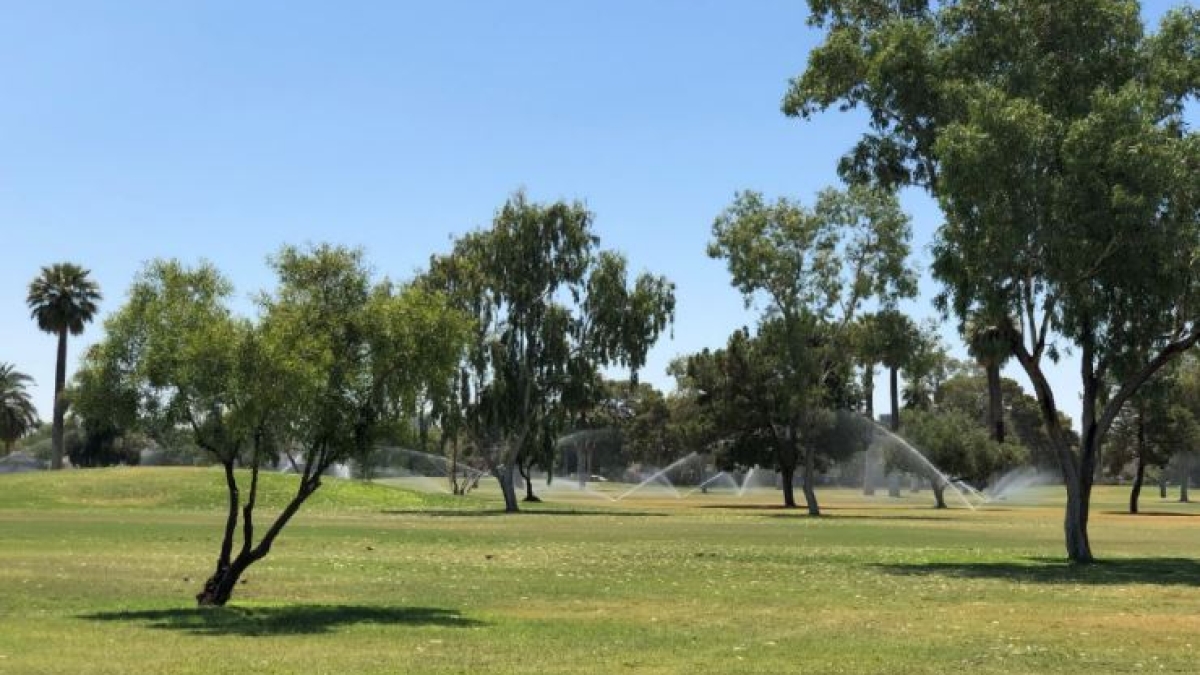
Irrigation at Encanto Golf Course in Phoenix. Photo by Mercedes Kindler/ASU
It will come as no surprise to anyone living in Phoenix that 2020 has been a record-breaking year for high temperatures. According to the National Weather Service, in 2020 the Phoenix area has surpassed all previous years for average high temperatures and excessive heat warnings.
With the combined oppressive heat and COVID-19 restrictions on travel and indoor activities like movies and restaurants, many people have turned to urban parks for outdoor recreation.
And while Phoenix area parks can serve as an oasis for residents, the irrigation needed to keep parks lush and cooler comes at a high cost of water consumption.
To determine this cost, a team of scientists led by hydrologist Enrique R. Vivoni of Arizona State University’s School of Earth and Space Exploration and School of Sustainable Engineering and the Built Environment spent a year collecting data on weather conditions, evapotranspiration and soil water at Encanto Golf Course in Phoenix. The results of their study were recently published in Geophysical Research Letters.
Vivoni and his team identified that the park showed what meteorologists call the “oasis effect,” which refers to the creation of a microclimate that is cooler than a surrounding dry area due to the evaporation of a water source.
“The word ‘oasis’ may conjure up the image of a pool of water surrounded by palm trees in a sandy desert,” Vivoni said. “But this same effect occurs in urban parks when heat from the surrounding neighborhood is transported by winds into the park, increasing the evaporation rates.”
To measure the oasis effect at Encanto Golf Course, Vivoni and his team used special sensors at a weather station located within the park. These sensors measured water and energy fluxes along with carbon dioxide exchanges depicting plant photosynthesis and respiration.
Vivoni and graduate students Mercedes Kindler, Zhaocheng Wang and Eli Pérez-Ruiz worked together on the sensor deployment, data analysis and use of satellite-based products to monitor the park conditions.
“We set up at Encanto Park in February 2019 and all of our instruments were operational by the next month,” Kindler said. “For a year, we conducted weekly or biweekly visits to the sites for data collection and station maintenance. It has been a great experience working on this research project, since it has allowed us to learn more about water and energy fluxes at an urban golf course.”
Their notable findings were twofold. First, the oasis effect led to unexpectedly high evaporative losses during the night. Second, the oasis effect was related to the evaporation of soil water and irrigation water, and not to the activity of plants and grasses in the park.
“Because of the oasis effect, when we irrigate our urban parks at night, we lose vast amounts of water and we see increased carbon dioxide emissions, which could lead to higher global warming potential,” Vivoni said. “This has important implications for water conservation and greenhouse gas emission management in desert cities such as Phoenix.”
While additional studies are needed to determine when during the day it would be preferable to irrigate, making this management change would decrease evaporative loss and the carbon dioxide emissions — which contribute to global warming — during hot, dry, windy days.
It also remains to be determined how widespread this effect is within Phoenix. Given the large number of parks and golf courses, however, it is anticipated that the results of this study will yield important regional consequences to be considered by state, county and city agencies.
More Science and technology

Advanced packaging the next big thing in semiconductors — and no, we're not talking about boxes
Microchips are hot. The tiny bits of silicon are integral to 21st-century life because they power the smartphones we rely on,…

Securing the wireless spectrum
The number of devices using wireless communications networks for telephone calls, texting, data and more has grown from 336…

New interactive game educates children on heat safety
Ask A Biologist, a long-running K–12 educational outreach effort by the School of Life Sciences at Arizona State University, has…
